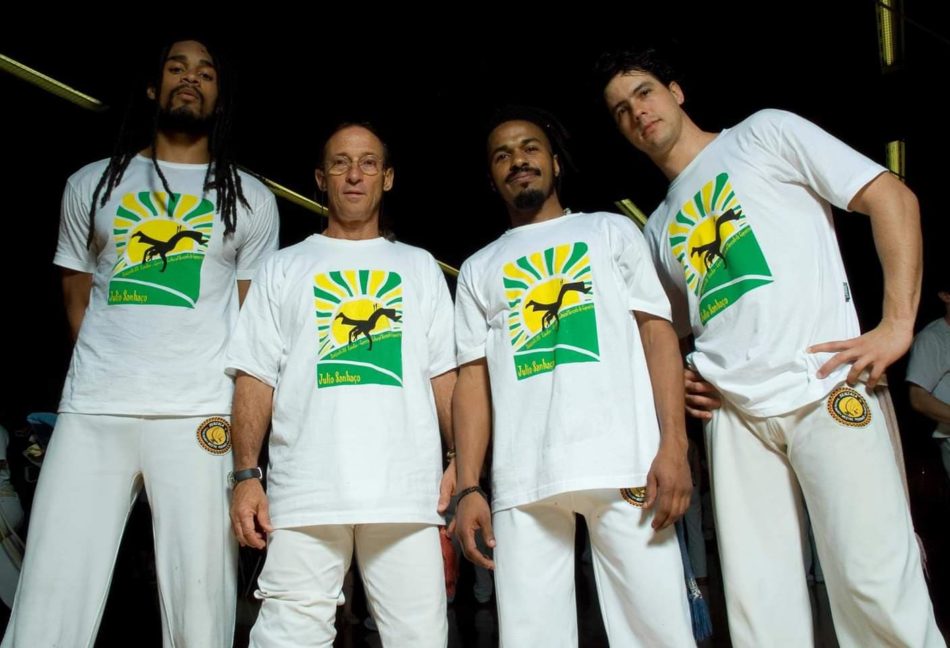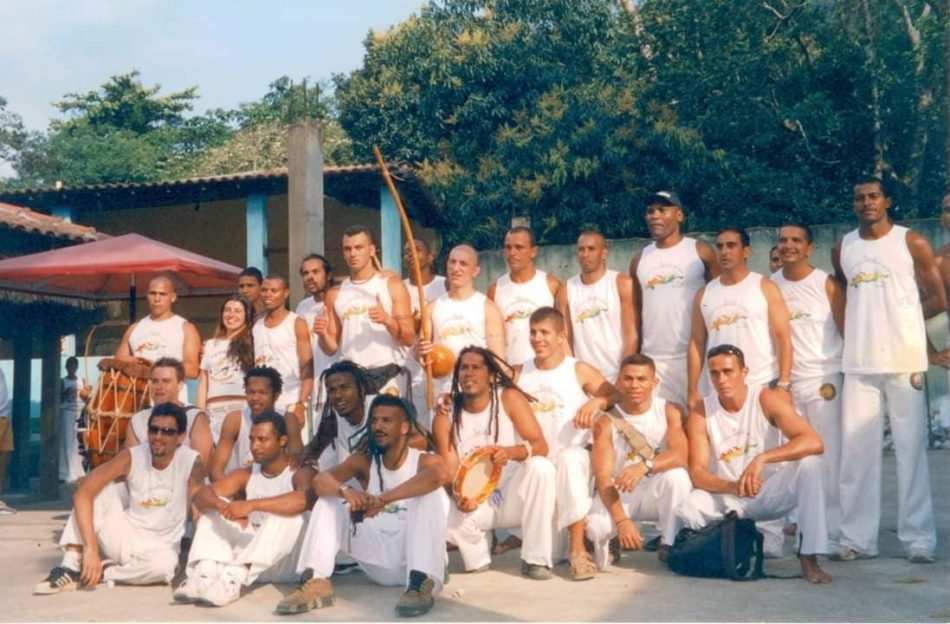Centro Cultural Senzala London is celebrating its 15th anniversary this year.
To celebrate, we’re posting a series of interviews with our teachers so you can get to know them a bit better.
Here’s the final interview (part 2/3) with Contra Mestre Julio Sanhaço, shortly before his formatura to become a master. Read part 1.

Your personal journey
– Why do you still train capoeira? What keeps you interested and motivated?
The music – I wanted to learn how to play the berimbau, and that made me stick with capoeira. I asked my friend how to play and was told that the best way was to train capoeira and then learn music after class. I just didn’t stop!
You learn more every day – it’s a continuous learning process, not only physically but you discover and learn different things from people; from older masters and from younger masters. There is still a lot to discover about capoeira. A lot of information about capoeira is hidden – the origins i.e. about last century when it was prohibited in Brazil, and there are still a lot of questions that are unanswered. It’s hard to confirm and get the right information.
What or who inspires you?
For me I’ve always been into sports and martial arts – the music, sports, nature and the social part of it, everything together is the power of capoeira and when you discover what capoeira really is and what it represents, it’s very deep. This inspires me every day – sometimes I feel tired but then I look back and it refreshes me when I practice and play berimbau.
My master Peixinho inspires me – he was a huge inspiration. Lots of my friends too. I remember when I was a beginner and I could see the graduados, the higher belts, playing. I told myself that I wanted to play with them and take part in the same rodas if I could join them.
Mestre Peixinho was committed to capoeira. When I met him he was in his 40s and very fit. He was training a lot and paying attention to the needs of his students and raising the bar for everyone. That was a huge inspiration because there were others the same age as him, but not doing or achieving what he was – it was amazing to see. That is also a reason that Senzala became as strong as it is, because he raised the bar for the masters of his generation and the generation above, so the level of capoeira improved in many parts of Brazil. Other schools tried to catch up with Senzala.

– What are your favourite parts about capoeira?
The history of capoeira; the meaning of everything we do – there is always a meaning. When you start you don’t know the half of it. When you practice, there is meaning, everything is connected – the history behind it is linked to places, it’s fascinating because Europe is involved through Portugal as well as the African descendants, and the Brazilians. It’s a beautiful history.
Your classes
– How long have you been teaching?
Since 1999 – 20 years this year! Mestre Peixinho wanted teachers to have at least five years of training, reaching grey belt, before they started to teach. If he saw orange belts that were more advanced, then he supported them teaching too.
– What do you enjoy about it the most?
That I get presents from my students, like chocolate! [Julio laughs] Seeing the results – you don’t need long to see students starting to develop. I also enjoy seeing their commitment and observing what capoeira transmits to them. They don’t realise what it is all about in the beginning, and the language is difficult, but somehow they receive the information, and they pass it back to me. I can see them transforming the information they receive and I can see that they are using it, and then they start to enjoy the process more. It is also nice when they are hooked on training and are dedicated to practicing, not just once in a while but regularly, and seeking information by themselves.

Read part 3 of this interview. Read our other teacher interviews with Foo, John, Roland and Ronaldo.
Julio teaches classes for children and adults of all levels throughout the week. Check out our class timetable here.
